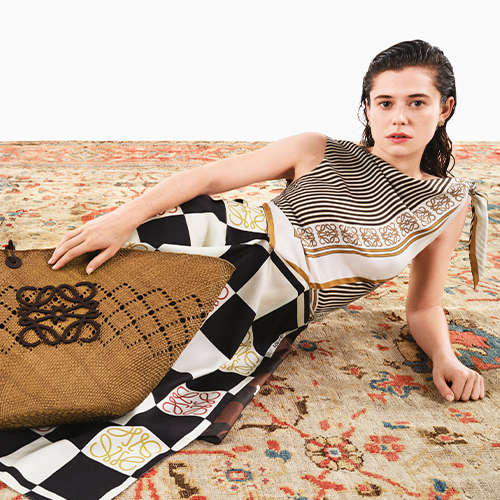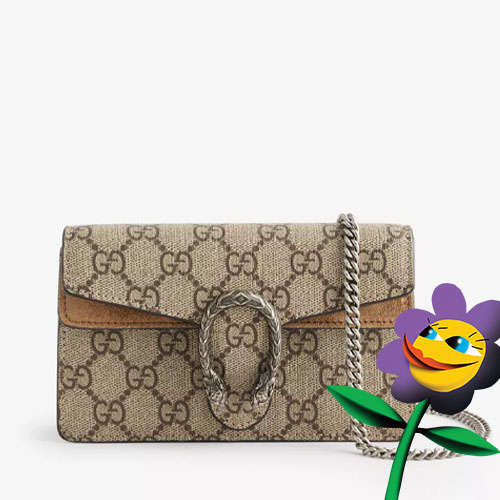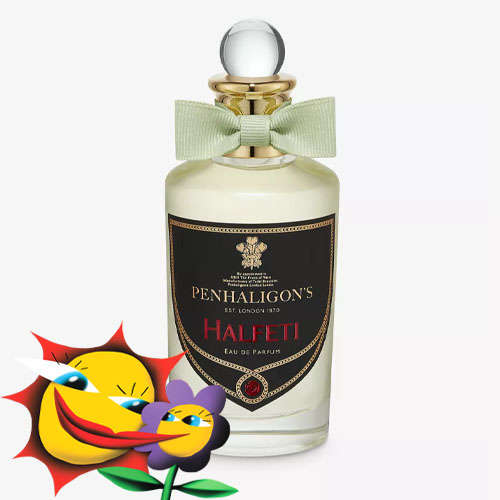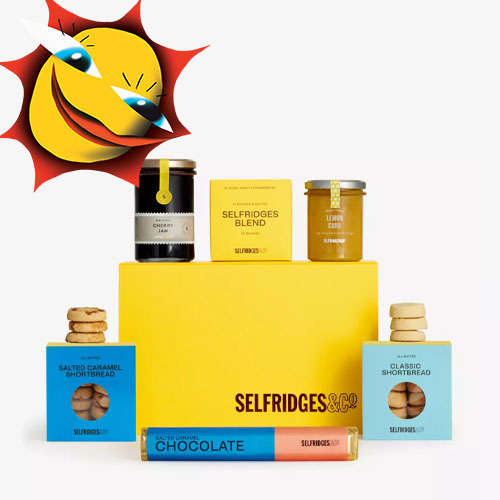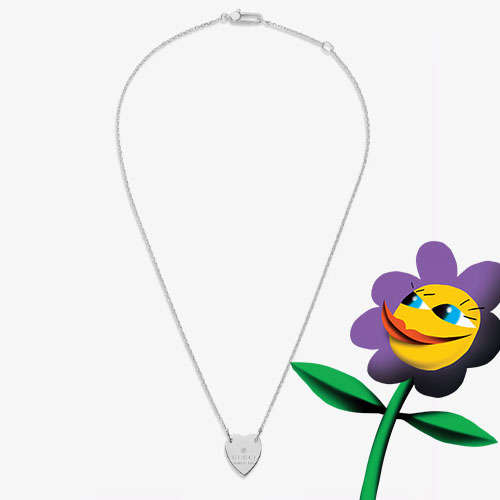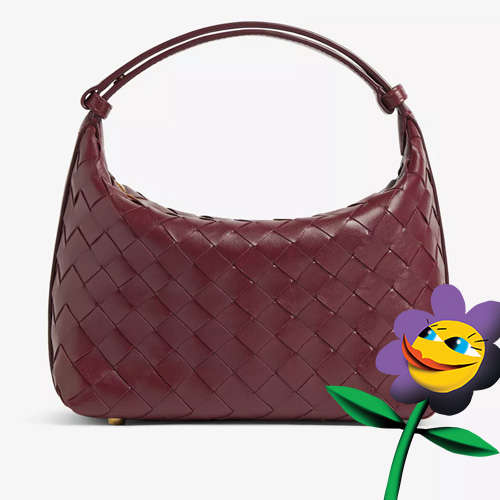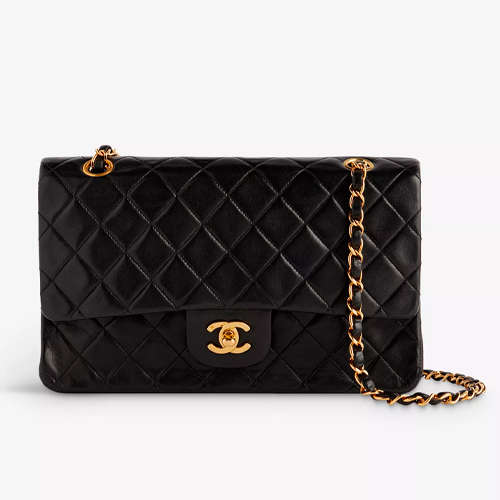- Australia / AUD $
- Canada / CAD $
- China / CNY ¥
- France / EUR €
- Germany / EUR €
- Hong Kong SAR China / HKD $
- Ireland / EUR €
- Italy / EUR €
- Japan / YEN ¥
- Kuwait / USD $
- Macao SAR China / HKD $
- Netherlands / EUR €
- Qatar / USD $
- Saudi Arabia / USD $
- Singapore / SGD $
- South Korea / KRW ₩
- Spain / EUR €
- Taiwan / TWD $
- United Arab Emirates / USD $
- United Kingdom / GBP £
- United States / USD $
- Not yours? Read more
Tell us what you think
Shop in your local currency and language
You are currently in United States US / USD $ store
- English
- English
- English
- English
- English
- English
- English
- English
- English
- English
- English
- English
- English
- English
- English
- English
- English
- English
- English
- English
- English
Did you know that we deliver to 130 countries or regions and offer a range of delivery options to suit you wherever you are in the world? Find out more
Sign up once to our Selfridges+ service and you can enjoy unlimited deliveries wherever you are in the world. FIND OUT MORE
International delivery
With almost everything on selfridges.com available for International Delivery, you can send your order to 130 countries or regions around the world, including North America, Australia, the Middle East and China.
Although we only offer 20 currencies to browse in online, you can still deliver to all of the following countries or regions:
- Algeria
- Andorra
- Antigua and Barbuda
- Aruba
- Australia
- Austria
- Azerbaijan
- Bahrain
- Bangladesh
- Barbados
- Belarus
- Belgium
- Belize
- Bermuda
- Bolivia
- Botswana
- Brunei
- Bulgaria
- Cambodia
- Canada
- Cayman Islands
- Chile
- China
- Colombia
- Costa Rica
- Croatia
- Cyprus
- Czech Republic
- Denmark
- Dominica
- Dominican Republic
- Ecuador
- Egypt
- El Salvador
- Estonia
- Finland
- France
- French Guiana
- Germany
- Gibraltar
- Greece
- Grenada
- Guadeloupe
- Guatemala
- Guernsey
- Guyana
- Honduras
- Hong Kong
- Hungary
- Iceland
- India
- Indonesia
- Ireland
- Israel
- Italy
- Jamaica
- Japan
- Jersey
- Jordan
- Kazakhstan
- Kenya
- Kuwait
- Laos
- Latvia
- Lebanon
- Lesotho
- Liechtenstein
- Lithuania
- Luxembourg
- Macau
- Malaysia
- Maldives
- Malta
- Martinique
- Mayotte
- Mexico
- Monaco
- Montserrat
- Morocco
- Myanmar
- Namibia
- Netherlands
- New Zealand
- Nicaragua
- Nigeria
- Norway
- Oman
- Pakistan
- Panama
- Paraguay
- Peru
- Philippines
- Poland
- Portugal
- Puerto Rico
- Qatar
- Reunion
- Romania
- Rwanda
- Saint Kitts and Nevis
- Saint Lucia
- Saint Martin (French part)
- San Marino
- Saudi Arabia
- Serbia
- Singapore
- Slovakia
- Slovenia
- South Africa
- South Korea
- Spain
- Sri Lanka
- Suriname
- Swaziland
- Sweden
- Switzerland
- Taiwan
- Tanzania
- Thailand
- Trinidad and Tobago
- Turkey
- Uganda
- Ukraine
- United Arab Emirates
- United Kingdom
- United States
- Uruguay
- Venezuela
- Vietnam
MEET OUR GALLERY-WORTHY HOMEWARE DESIGNERS
Words: Amy Newson
Meet the designers – and their eye-catching creations – that prove that home really is where the art is.
With our Sunday afternoon strolls round the Tate on hold for a little while longer, we’re all looking for different ways to get our fill of all things art. At Selfridges, we’ve been busy brightening up our living spaces with some gallery-worthy homeware pieces, made by designers who bridge the worlds of art and design. Here we meet the designers, discover their artistic inspirations and set out to curate an at-home exhibition of beautiful objects that are sure to bring some added intrigue to our spaces.
Hood Ceramics – platter and leggy vessel (coming soon)
Hood Ceramics
You may have spied Libby Hood’s leggy candle holders all over Instagram already, but if you haven’t, you’re welcome. Working out of her spacious and bright east London studio, Libby hand-builds her pieces (each ceramic takes about three weeks to complete), so they have a unique asymmetrical feel – making them perfect for all you collectors out there…
How are your ceramics inspired by art?
Ever since I was young, I’ve loved art and sculpture. I studied art at college before deciding to move into interior design as a career. It was a joy to return to making with my hands again when I started Hood Ceramics.
What are you working on currently?
The most recent collaboration I’ve worked on is with my close friend and artist Nicola Morland. Her work is inspired by women and the subtle yet distinctive contours of the female form. Working with abstract shapes and features of the human face and body, she aims to express a range of raw emotions in playful and unexpected ways. It’s always so much fun to work with another creative mind and bring together two different ways of thinking, and, in this collaboration, two different artistic mediums.
Not being able to visit galleries to get inspired has been one of my biggest personal challenges during the pandemic. I miss spending the day at the South Bank, walking down to the Tate and getting lost in an exhibition at the Hayward. I always feel so energised and inspired after spending time around art.
– Libby Hood
What inspires your work?
For each piece I try to start with a simple idea, often inspired by a form or shape I have seen that I can’t get out of my head. I then start to have a play – hand-building makes it really easy to experiment and intuitively play with scale and shapes as I go. The leggy candle holders and lug mugs I make started out as quite simple and functional pieces, but over time have developed their own ‘personality’.
Why is sustainability an important factor in your designs?
Working in ceramics, you use so many raw materials (literally straight from the ground!), so you are constantly aware of the amazing natural and abundant resources available to us. Once fired, ceramics can last a lifetime, so it’s important to me that pieces are not only well made but also simple and timeless in design.
Yinka Ilori – patterned plates (coming soon) and cushion
Yinka Ilori
From winning London Design Festival’s Emerging Design Medal last year to co-heading (with artist Es Devlin) creative direction and design on this year’s BRIT Awards (joining the ranks of previous artists such as Tracey Emin and Zaha Hadid) – Yinka Ilori is one of the most exciting names in design right now. Yinka also designed three of our Project Earth campaign window displays last year, each representing a natural landscape, using materials and objects from our everyday lives. And best of all? He has just launched his debut homeware collection. We love his colourful, abstract and contemporary designs, which are inspired by his British-Nigerian heritage and a focus on sustainability.
What advice would you give someone looking to invest in some new homeware?
Look for pieces that will give you and your guests joy, but remember to invest in homewares that will age with you and that can be passed on to your loved ones too.
Why is sustainability an important part of your work?
Sustainability is important because I believe it is our responsibility to make sure that we protect the planet, not only for ourselves but for the future generations to come. For most of my projects it is essential for me to make sure that my work has an afterlife, instead of being thrown away into landfill.
Tell us about the three window displays you designed for our Project Earth campaign.
The idea behind these windows was to question our relationships with waste and nature. By incorporating a series of everyday objects in each window, I wanted us to ask ourselves these questions: can I reuse or recycle what I already have instead of buying a new one? And if I am going to buy something new, how will it continue to enrich my everyday life for years to come? By using everyday objects, I wanted to create three dream-like scenes, giving the audience an insight into a new world, and what we could have if we took more care of our environment.
Slowdown Studio – recycled cotton throw
Slowdown Studio
Finding emerging artists through an annual competition on Instagram, Slowdown Studio has commissioned artists from over 30 countries in the past few years alone to create its beautiful objects for the home. Based in sun-kissed east LA, the studio is run by Marc Hendrick, who has been perfecting this artist-designed business model since 2015 – and according to him, the more artistic styles come his way, the better…
What inspired you to create the studio?
I had worked with many artists in the past while freelancing as an art director, and I loved the process of working with different creative people on different projects. In 2015 I got interested in home textiles, and I felt like it was an area that needed a little bit of a creative injection, which is why I started to create small runs of artist-designed blankets as Slowdown Studio.
What are your most popular pieces?
Our woven blankets are our signature item, they’re just so versatile. You can use them on a bed, a couch, or even take them outside as a picnic blanket. And many of our customers hang them on the wall or even frame them to create a large and beautiful art piece, which is where I love to see them the most.
How do you think the art world influences home designs?
Art, furniture design and architecture are so connected to one another; they are all equally important in creating a beautiful home space. Each has the power to inform another in design, and the colours and forms used in certain art pieces can completely dictate the mood of any room.
Maison Dada – sculptures, candle holder (coming soon) and tray (coming soon)
Maison Dada
As its name suggests, Maison Dada was born out of a dream to inject a good dose of Dadaism (an early 20th-century European avant-garde art movement) into everyday life. The movement’s timelessness and ‘out-of-the-box’ approach is what inspired founders Thomas Dariel and Delphine Moreau to start their homeware brand, and we can’t blame them one bit – who wouldn’t want these artful pieces in their home? We spoke to Thomas to find out more…
How do you make Dadaism relevant for today and how does it inspire Maison Dada’s homeware pieces?
I’ve always been inspired by the Dadaist movement and its artists. I find it absolutely timeless in its way of thinking and creating freely. Today, Dadaism is brought to life by breaking the boundaries between the arts and its creators. People welcome designers, artists, artisans and architects who move between different disciplines. We channel this creative approach at Maison Dada in the way we design forms and colours.
How does being based in Shanghai inspire your homeware pieces?
Shanghai and its local culture have been an amazing source of inspiration for my designs. Its street life, architecture and craftsmanship have all impacted my work and artistic approach.
From the shapes of the temple roofs to the art of lacquer, the energy of the Huangpu river and the traditional ceramics, Chinese heritage is a limitless territory where a designer can spontaneously let their curiosity travel.
– Thomas Dariel
Why is sustainability an important factor in your designs?
We are always searching for the most effective ways of being responsible, for example Maison Dada is a member of Éco-mobilier, a French institute that collects, sorts, recycles and reuses furniture. We are also preparing to open our own ateliers in Burgundy to cater for our Western markets, while keeping our Shanghai base for our Asia-Pacific markets – local production is key for sustainability.
Valeria Vasi
If you’re a lover of geometric homeware, you’ll love these pieces. Combining art, design and functionality, Valeria’s homeware draws on her childhood spent in Moscow, Barcelona and Paris – and her travels around Asia (if you look closely, you can see that her main source of inspiration is the Japanese floral art of ikebana). Currently, she calls Barcelona home and utilises the city to the max when sourcing her materials from local artisans… What better way to throw some shapes in your living room?
How do you create art pieces that are also usable objects at the same time?
When I started this project, I wanted to create pieces that combined art, design and functionality, which could work separately or as collectible objects to have at home. The first thing I had in mind was simplicity and geometry as they are timeless…
How do you think the art world influences home designs?
Art has existed in every culture and consists of different forms of expression that goes from performances, experiences and also objects. All of them are created intentionally with a high focus on aesthetic. I believe art and design share the same aesthetic purpose, to bring life into a room.
For me, each piece has to be made with love, care and time to become a unique piece with a soul behind it.
– Valeria Vasi
How does being based in Barcelona inspire your homeware pieces?
Barcelona is a relaxed Mediterranean city that has great artisanal traditions, a beautiful coastline, nice weather and a nonchalant aesthetic. It’s a great place to create, as you can still find artisans who work with traditional techniques and are also very open to new ideas. Having that know-how nowadays is very rare, and I feel lucky that I’ve found artisans who work with the natural materials I use in my collections, such as ceramics, glass and wood.
Pols Potten
Bringing us no-nonsense and curious designs from Amsterdam since 1986, design house Pols Potten really knows a thing or two about having fun with bold and bright colours. Collaborating with designers and craftspeople from across the world, the studio’s designs are unique and feelgood, at all times. Working from home isn’t so bad if you’re surrounded by these beauties, right? We spoke to Creative Director Jan Wolleswinkel to find out more…
How does Dutch design play a key role in Pols Potten designs?
Dutch design is no-nonsense. Research, curiosity and fun are at the heart of it. It plays a key role in our designs – it’s why we try to be as bold, colourful, artisanal and tongue-in-cheek as possible.
What inspires the designs behind your homeware pieces?
Our designs draw inspiration from mixed art sources and illustrate the transformation of the Western and Dutch design concepts into artisanal manufacture.
How do you think the art world influences home designs?
The art world is hugely influencing, home designs are all about colour combinations, new techniques, stories – and how to present it. Art helps to broaden design’s horizon in every way imaginable.

